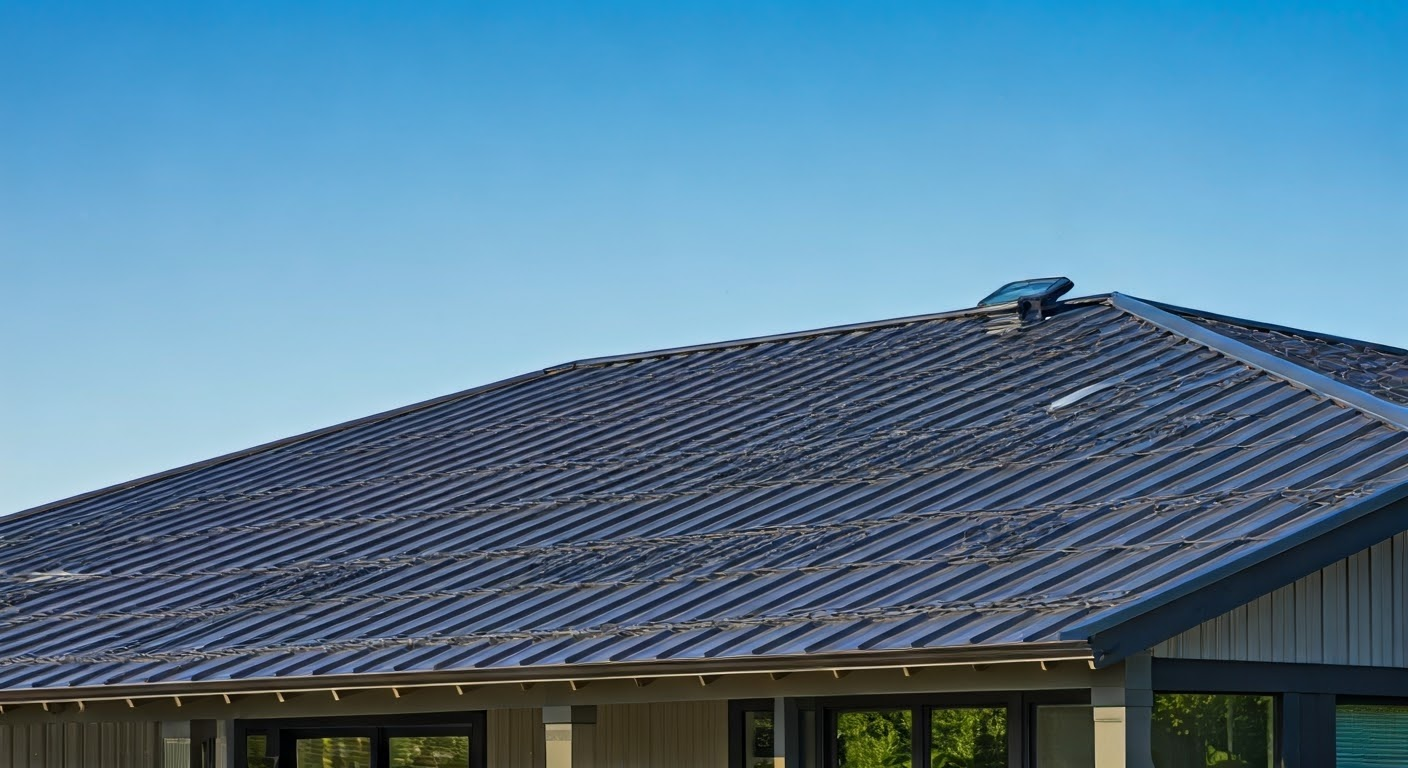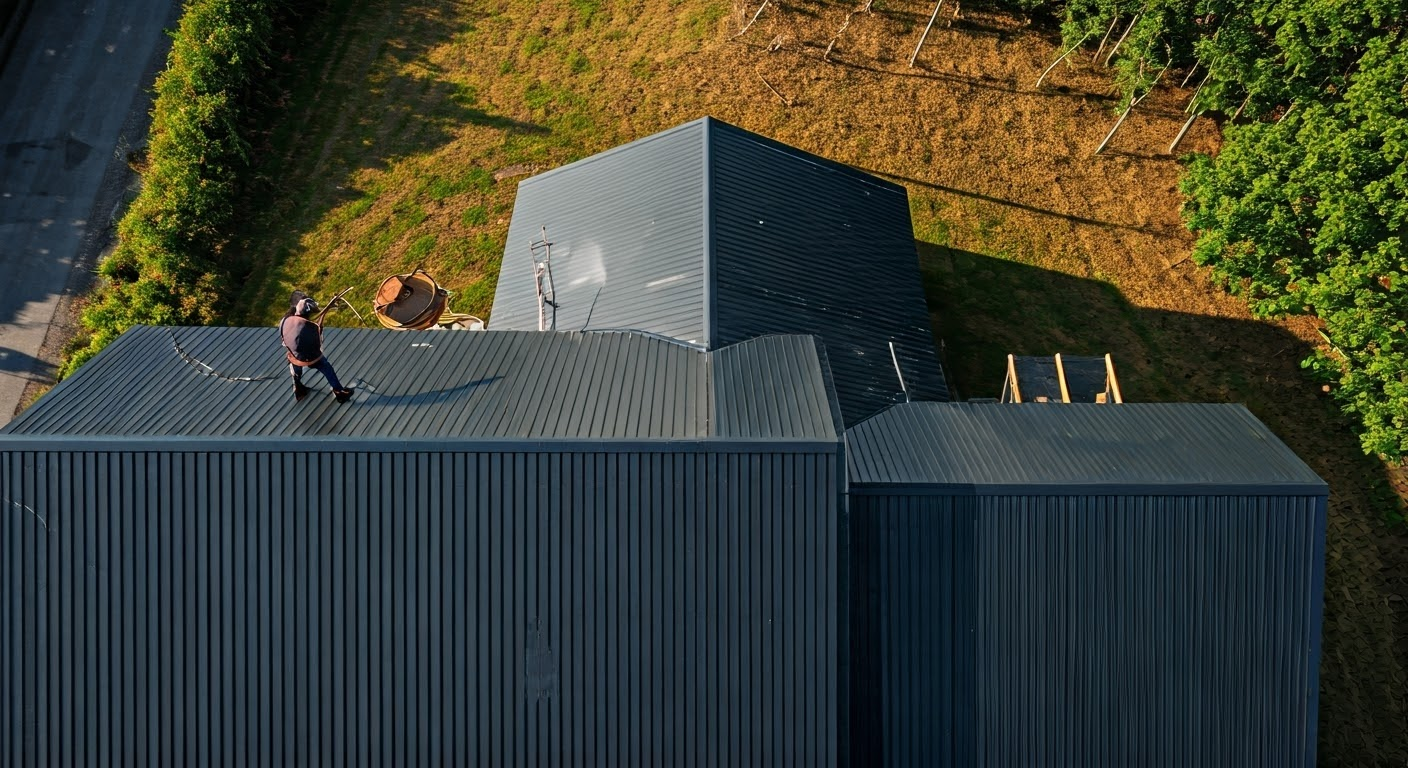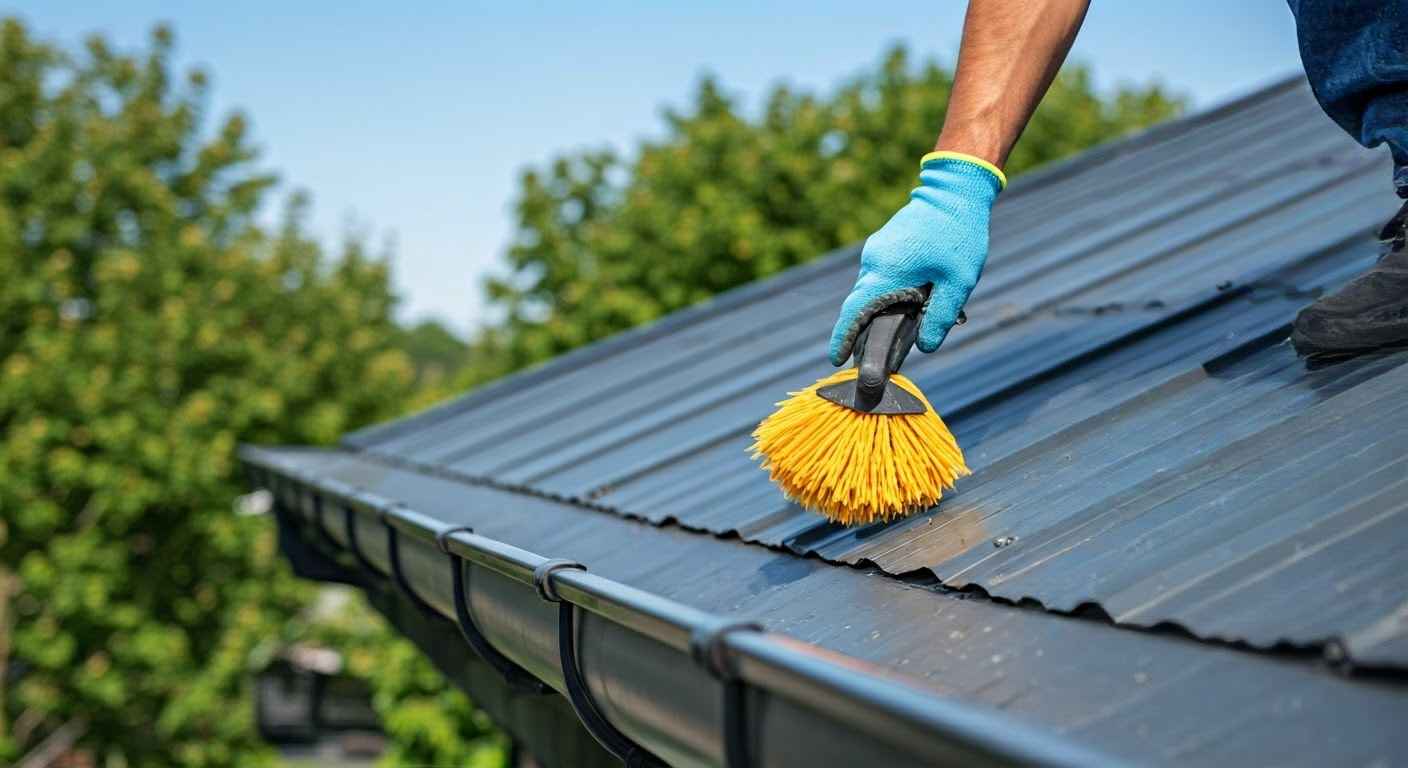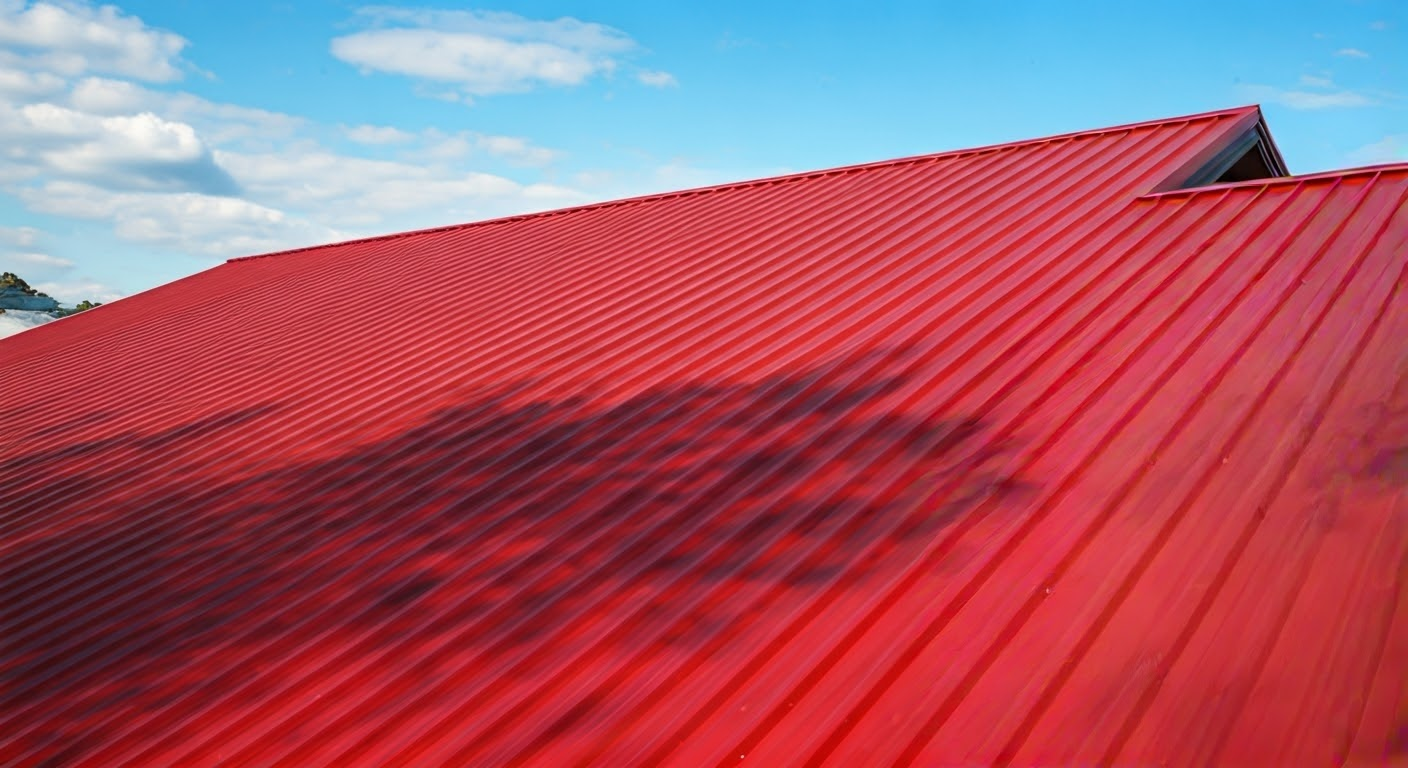
Key Highlights
- Discover essential tips to maintain your metal roof and extend its lifespan.
- Learn about routine inspection, cleaning, and preventative measures for optimal roof health.
- Explore repair and replacement techniques to address damage and wear.
- Find out how to enhance your roof’s durability and aesthetics for long-term performance.
- Get answers to frequently asked questions about metal roof maintenance.
Introduction
Metal roofing has gained immense popularity as one of the most durable and long-lasting roofing materials available. However, like any other roofing system, a metal roofing system requires regular metal roof maintenance to ensure its longevity and optimal performance.
Understanding the Basics of Metal Roof Maintenance

Maintaining your metal roof is crucial to protect your investment and enjoy the numerous benefits it offers, providing you peace of mind. By understanding the basics of metal roof maintenance, you can prevent potential problems, extend the lifespan of your roof, and keep it looking its best.
Regular inspections and timely repairs are essential aspects of metal roof system maintenance. By addressing minor issues proactively, you can prevent them from escalating into major problems that require costly repairs or even a complete roof replacement.
Key Reasons for Regular Maintenance
Regular maintenance is the key to maximizing the lifespan of your metal roof and ensuring its continued protection for your property. Neglecting maintenance can lead to several issues that could have been easily prevented.
Severe weather conditions, such as heavy rain, hailstorms, high winds, and extreme temperatures, as well as extreme weather, can take a toll on your roof. Regular maintenance helps identify and address any damage caused by these events, preventing leaks and structural problems.
Moreover, proper maintenance helps preserve the aesthetic appeal of your metal roof. By keeping it clean and free of debris, you can maintain its visual appeal and protect its value.
Different Types of Metal Roofs and Their Specific Needs
Different types of metal roofs have unique characteristics and require specific maintenance approaches. For instance, a standing seam metal roof generally requires less maintenance compared to other types, thanks to its concealed fastener system. However, it is still essential to inspect the seams periodically and ensure that the flashing materials are intact.
Metal shingle roofs, on the other hand, may require more frequent inspections, especially around areas with penetrations such as chimneys, air vents, or skylights. It’s crucial to ensure that the flashing materials around these areas are properly sealed to prevent water intrusion.
Consulting with a qualified roofing contractor is advisable to determine the specific maintenance needs of your metal roof type and to ensure that the maintenance is carried out correctly. A professional roofer can assess the condition of your roof and provide tailored recommendations.
Routine Inspection and Cleaning

Regular inspection and cleaning are the cornerstones of metal roof maintenance. By having an annual roof inspection and inspecting your roof at least once a year, you can identify potential problems early on and take prompt action.
Look for signs of wear and tear, such as loose or missing screws, damaged or corroded flashing, and any visible damage to the metal panels. Additionally, cleaning your roof regularly will prevent the buildup of debris that can trap moisture.
How to Safely Inspect Your Metal Roof
While you can certainly perform a visual inspection from the ground, a thorough roof inspection often requires getting onto the roof itself. However, it’s crucial to prioritize safety when accessing your roof. If you’re uncomfortable with heights or lack the necessary safety equipment, it is always best to contact a professional roofing contractor.
If you choose to conduct the roof inspection yourself, make sure to use a sturdy ladder that is properly secured and have a helper present. Wear shoes with good traction to prevent slipping, and avoid walking on the roof during wet or icy conditions.
Remember, a roof inspection can be dangerous, and taking necessary precautions can significantly reduce the risk of accidents.
Effective Methods for Cleaning Metal Roofs
Cleaning your metal roof is essential to remove debris buildup, prevent staining, and ensure proper water drainage. Here are some effective methods:
- Gentle Washing: Use a garden hose with a spray nozzle and mild detergent to remove dirt, leaves, and other debris. Avoid using abrasive cleaners or high-pressure washers, as these can damage the protective coating on metal panels. Instead, opt for a garden hose with light pressure, as this is a safer choice for your roof.
- Soft Bristle Brush: For stubborn stains or mildew, use a soft bristle brush with a cleaning solution specifically designed for metal roofs. Work in the direction of the roof’s slope to prevent water from seeping under the panels.
- Clearing Gutters and Downspouts: Clogged gutters and downspouts can lead to water backup, causing damage to your roof and home’s foundation. Clean them regularly, especially after storms or high winds, to ensure proper drainage.
Seasonal Cleaning Tips to Enhance Roof Longevity
Throughout the year, different weather conditions can impact your metal roof. Implementing seasonal cleaning tips can help enhance its longevity:
Spring: After the winter months, inspect your roof for any damage caused by winter storms, such as fallen branches or debris. Clear out gutters and downspouts of leaves and debris accumulated over the fall and winter. Summer: Trim back any tree branches that are close to or touching your roof’s surface, as they can cause damage during high winds or storms. Fall: Make sure your gutters are clear of leaves and debris before the winter season arrives. Heavy snow and ice can make it difficult to address clogged gutters during winter.
Winter: While it is not advisable to walk on a snowy or icy roof, you can use a snow rake or a soft bristle broom to remove heavy snow buildup from the edges of your roof. This can help prevent ice dams and potential water damage. By following these seasonal cleaning tips, you can keep your metal roof in good condition year-round.
Preventative Measures for Metal Roof Care

In addition to regular inspection and cleaning, implementing preventative measures is vital for proactive metal roof care.
These measures focus on preventing potential problems before they arise, ensuring the long-term health and durability of your roof.
Importance of Gutter Maintenance
Gutters play a crucial role in protecting your roofing system. They channel water away from the foundation of your home, preventing soil erosion, basement flooding, and damage to your siding. However, gutters can only function effectively if they are free from obstructions. Debris buildup in gutters, such as leaves, twigs, and dirt, can obstruct proper drainage, causing water to overflow and seep into your roof or home’s structure. Over time, this can lead to costly repairs. Regularly cleaning your gutters every few months or installing gutter guards can significantly prevent debris buildup, ensuring proper water flow and protecting your roofing system.
Strategies to Prevent Rust and Corrosion
Metal roofs are highly resistant to rust, but it’s still essential to take preventive measures, especially if you live in a coastal area or an environment with high humidity. One crucial step is to promptly address any scratches or chips in the paint system. These exposed areas are more susceptible to rust and corrosion. Use a rust-inhibiting metal primer and touch-up paint specially designed for metal roofs to seal these areas. Regularly inspect your roof for any signs of rust, such as rust spots or discoloration. If you notice any rust, remove it immediately using a wire brush and apply a rust-inhibiting primer before repainting.
Techniques to Avoid Water Damage
Preventing water damage and major damage is paramount in maintaining the integrity of your metal roof and your home. One of the most common causes of water damage is roof leaks. Regularly inspecting your roof for any signs of leaks, such as water stains on ceilings or walls, can help you address them promptly. Pay close attention to areas around flashing, seams, and penetrations, as these are common leak-prone areas. Ensure that the flashing around chimneys, vents, skylights, and other protrusions is in good condition and properly sealed. If you notice any gaps or cracks, seal them with a high-quality sealant designed for metal roofs to prevent water intrusion.
Repair and Replacement Tips
When it comes to metal roof maintenance, sometimes repairs or replacements are necessary to address damage or wear and tear. Timely repairs and replacements not only restore your roof’s functionality but also prevent further damage and extend its lifespan.
Identifying When to Repair vs. Replace
Determining whether to repair or replace your metal roof depends on the extent of the damage. Minor scratches, small holes, or dents can often be easily repaired using touch-up paint or sealant. However, more significant damage, such as extensive rust, large holes, or widespread seam separation, may warrant a roof replacement. If you’re unsure about the extent of the damage or the best course of action, it’s always recommended to consult a qualified roofing contractor. They can assess the condition of your roof and provide expert recommendations based on their experience and industry knowledge.
Step-by-Step Guide on Replacing Metal Roof Panels
If you have damaged metal roof panels that need replacing, it is highly recommended to hire a professional roofing company for the job. However, if you possess the necessary skills and experience, here’s a step-by-step guide:
| Step | Description |
|---|---|
| 1. Safety First: Wear appropriate safety gear, including gloves, safety glasses, and a safety harness when working on the roof. Ensure the ladder is stable and secure. | |
| 2. Remove the Damaged Panel: Carefully remove the fasteners holding the damaged panel in place. If the panels overlap, you may need to lift adjacent panels slightly to slide out the damaged one. | 3. Install the New Panel: Position the new panel in place, ensuring it aligns correctly with the overlapping panels and that enough space is maintained for proper thermal expansion. Secure it using the appropriate fasteners and sealant. |
| 3. Install the New Panel: Position the new panel in place, ensuring it aligns correctly with the overlapping panels. Secure it using the appropriate fasteners and sealant. | |
| 4. Inspect and Seal: After installing the new panel, inspect the surrounding area for any gaps or loose fasteners. Apply sealant as needed to prevent leaks. |
How to Address Leakages and Sealant Issues
Roof leaks can be frustrating and potentially damaging to your home. Addressing them promptly is essential to prevent further damage.
Start by identifying the source of the leak. Check for any visible signs, such as water stains, dripping, or damp insulation. Once you’ve located the leak, assess if it’s a minor issue you can address yourself or if it requires professional attention.
For minor issues, you can use a high-quality roof sealant compatible with metal roofing to seal any gaps, cracks, or holes. Apply the sealant according to the manufacturer’s instructions.
Enhancing Durability and Aesthetics

To make the most of your metal roof investment, consider going beyond basic maintenance to enhance its durability and preserve its visual appeal.
By taking steps to protect the metal and enhance its appearance, you can enjoy a roof that looks great and stands strong for years to come.
When and How to Repaint Your Metal Roof
While metal roofs are known for their durability and longevity, the paint finish can fade or chip over time due to exposure to the elements. A fresh coat of paint when repainting your metal roof not only enhances its aesthetic appeal but also protects it from rust and corrosion.
As a general guideline, consider repainting your metal roof every 10-15 years or sooner if you notice significant paint chips, fading, or signs of rust. Before repainting, thoroughly clean the roof’s surface to remove dirt, debris, and any loose paint.
Use a high-quality acrylic latex paint specifically designed for metal roofs. Apply at least two coats for optimal coverage and durability. Ensure the paint is compatible with the existing paint system. Consult the roofing manufacturer or a professional for recommendations.
Choosing the Right Coatings to Reflect Heat and UV Rays
When selecting coatings for your metal roof, consider options that offer heat reflection and UV protection to enhance energy efficiency and roof longevity.
Coatings with heat-reflective properties help reduce the amount of heat absorbed by your roof, keeping your home cooler during hot summer months. This can lead to significant energy savings and increased comfort levels.
Additionally, UV protection is crucial to prevent the paint system from fading, chalking, or becoming brittle due to prolonged exposure to the sun’s harmful rays. Opt for coatings with high UV resistance to protect your roof’s finish and maintain its color vibrancy over time.
Upgrading Insulation and Ventilation Systems
While not directly related to the metal roof itself, upgrading the insulation and ventilation systems in your attic can significantly impact the performance and lifespan of your entire roofing system.
Proper insulation helps regulate temperature and moisture levels in your attic, preventing condensation that can lead to mold growth, wood rot, and premature deterioration of roofing materials.
Adequate ventilation allows hot, moist air to escape from the attic, further preventing condensation buildup and reducing the load on your roofing system. Consider installing ridge vents, soffit vents, or a combination of both to enhance ventilation.
Conclusion
In conclusion, maintaining the health of your metal roof is crucial for its longevity and performance. By following a regular maintenance schedule, conducting routine inspections, cleaning, and addressing any issues promptly, you can ensure that your metal roof remains durable and in excellent condition aesthetically pleasing for years to come. Remember to prioritize preventative measures, repair and replace damaged components as needed, and enhance the roof’s durability and energy efficiency. By taking proper care of your metal roof, you can protect your investment and enjoy the benefits it brings to your property.
At Metal Roof Mobile AL, we ensure our clients receive the best possible outcomes. Our commitment to quality workmanship and customer satisfaction is unwavering, making us the top choice for residential Roofing services in our community.
Frequently Asked Questions
How often should metal roof screws be tightened or replaced?
The frequency of tightening or replacing metal roof screws varies depending on factors like weather conditions and roofing materials used, as well as thermal expansion. It’s best to consult a roofing contractor during regular maintenance to determine if your screws need attention.
Can I install a metal roof over an existing shingle roof?
In many cases, metal roofing can be installed over asphalt shingles, but it’s crucial to consult a qualified roofing contractor. They can assess the condition of your existing roof and ensure proper installation for optimal performance.
What are the signs that my metal roof needs maintenance?
Signs your metal roof may need maintenance include: leaks, rust spots, loose or missing screws, and dents or damage to the metal panels. If you notice any of these signs of wear, it’s a good idea to contact a roofing contractor to address potential problems and schedule avoid costly, expensive repairs by scheduling regular maintenance.
How does the weather in the United States affect metal roof longevity?
The diverse climate and severe weather events across the United States can impact metal roofing longevity. From hailstorms to extreme temperatures, these factors underscore the importance of selecting appropriate roofing materials and ensuring your roof remains in good condition through regular inspections.
